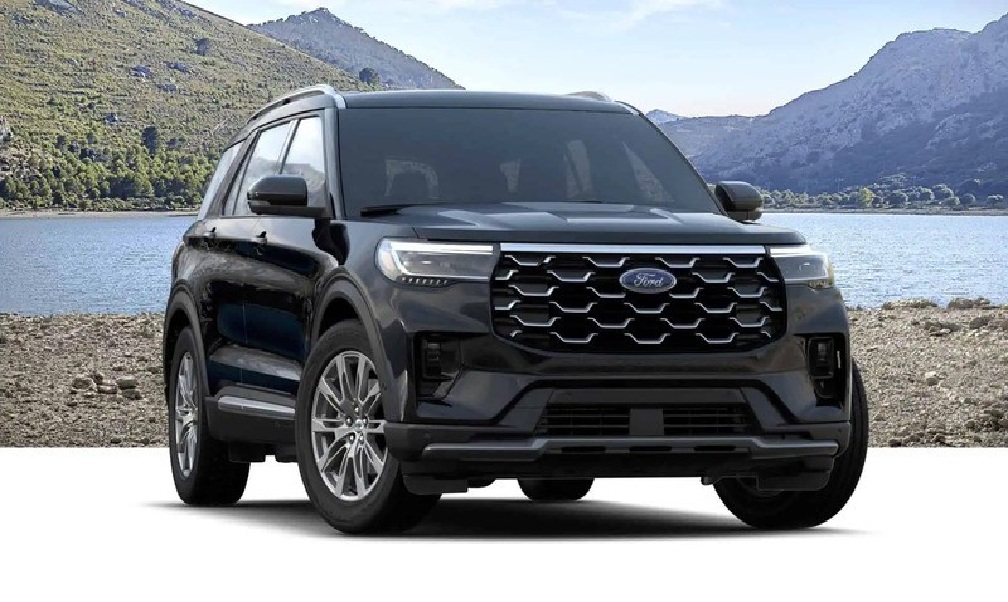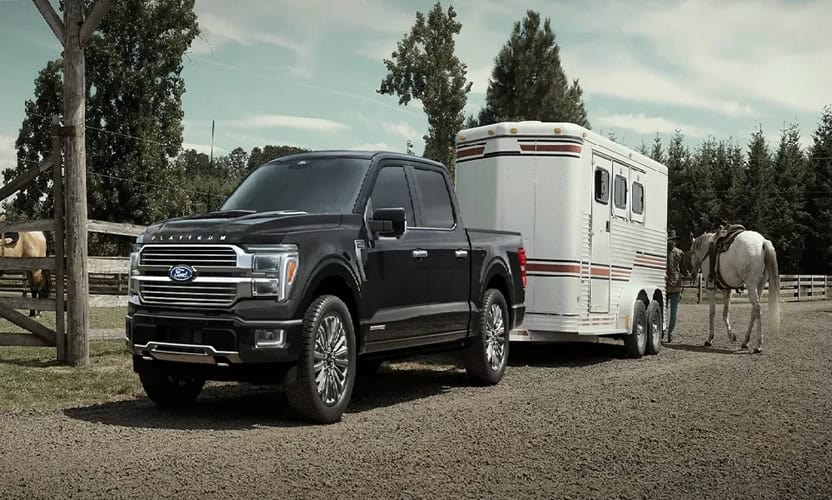The Ford Explorer continues to prioritize occupant protection with a comprehensive suite of advanced safety technologies. As one of the most popular three-row SUVs on the market, the Explorer combines robust passive safety features with sophisticated active systems designed to prevent accidents before they occur. This latest model represents a significant evolution in automotive safety, incorporating new technologies alongside enhanced versions of proven systems.

1. Ford Co-Pilot360 2.0 Plus
The foundation of the Explorer safety package is the enhanced Ford Co-Pilot360 2.0 Plus system, standard across all trim levels. This comprehensive suite includes Pre-Collision Assist with Automatic Emergency Braking, Lane-Keeping System, Blind Spot Information System with Cross-Traffic Alert, Auto High-Beam Headlamps, and Rear View Camera. The system has improved detection algorithms and faster processing, enabling more responsive intervention in emergency situations.
2. BlueCruise 2.0 Hands-Free Highway Driving
Available on higher trim levels, the updated BlueCruise 2.0 system enables hands-free driving on over 200,000 kilometers of compatible divided highways. The system uses a combination of advanced camera and radar sensors alongside high-definition maps to control steering, acceleration, and braking while monitoring driver attention through an infrared camera. New for 2025 is the addition of automatic lane changing capability, which can suggest and execute lane changes when appropriate.
3. Intersection Collision Avoidance
This innovative system uses radar and camera technology to detect potential collision risks when crossing or turning at intersections. If the system identifies an oncoming vehicle while the Explorer is attempting to turn left or cross traffic, it provides warnings and can automatically apply brakes to prevent or mitigate a collision. This addresses one of the most common and dangerous accident scenarios in everyday driving.
4. Evasive Steering Assist with Enhanced Capability
The Explorer Evasive Steering Assist system has enhanced capabilities. When the system detects a potential collision with insufficient stopping distance, it provides steering support to help the driver navigate around the obstacle. The improved version now includes multi-object detection, allowing it to identify the safest path between multiple obstacles in emergency situations.
5. Reverse Brake Assist with Expanded Coverage
Building on the standard Rear View Camera and Cross-Traffic Alert systems, Reverse Brake Assist can automatically apply the brakes if an obstacle is detected while backing up. The latest version expands detection coverage to include smaller objects and features, improves response time, and may help prevent many common low-speed collisions that occur in parking lots and driveways.
6. Intelligent Adaptive Cruise Control with Stop & Go and Lane Centering
This system combines traditional adaptive cruise control functionality with lane centering technology and traffic sign recognition. It can maintain a set distance from vehicles ahead, bring the Explorer to a complete stop in traffic, and resume driving automatically. The latest version adds speed limit sign recognition with automatic adjustment capability, helping drivers stay within legal limits and adjusting to changing road conditions.
7. 360-Degree Camera System with Split View and Washer
The available 360-Degree Camera system provides a bird’s-eye view of the surroundings through cameras mounted at the front, rear, and under each side mirror. The system includes higher-resolution cameras and a split-view function that can show multiple angles simultaneously. A new camera washing system ensures clear visibility in adverse weather conditions, addressing a common limitation of camera-based systems.
8. Post-Collision Braking 2.0
This system automatically applies moderate brake pressure after an initial collision is detected, helping reduce the risk of secondary impacts. The updated 2.0 version can maintain braking longer and includes improved sensor fusion to better determine appropriate response levels based on collision severity and post-impact vehicle dynamics.
9. Advanced Restraint System with Adaptive Front Airbags
The Explorer features an enhanced occupant protection system that includes dual-stage front airbags, side-impact airbags, and Safety Canopy side-curtain airbags covering all three rows. New are adaptive front airbags that adjust deployment force based on occupant size, position, and severity of the crash. The front passenger sensing system can detect if a child is in the front seat and automatically disable the airbag when appropriate.
10. Personal Safety System with SOS Post-Crash Alert
The comprehensive Personal Safety System coordinates deployment of various safety features during an accident. It analyzes crash severity, occupant positions, and seatbelt usage to optimize restraint performance. The integrated SOS Post-Crash Alert System automatically activates the horn and emergency flashers after a crash that deploys an airbag or activates the fuel pump shut-off switch, helping emergency responders locate the vehicle.
5 Top Best Features of the 2025 Ford Explorer
- PowerBoost Hybrid Powertrain: Available on multiple trim levels, this system combines a 3.3-liter V6 engine with an electric motor to produce 318 horsepower while achieving approximately 8.7 L/100 km combined fuel economy.
- 13.2-inch Vertical Touchscreen: The SYNC 4A infotainment system features a portrait-oriented display with enhanced voice recognition, wireless smartphone integration, and over-the-air update capability.
- Active Noise Cancellation: Using microphones and the audio system speakers, this technology identifies and counteracts unwanted engine and road noise, creating a noticeably quieter cabin environment.
- Terrain Management System: Seven selectable drive modes optimize vehicle systems for different conditions, from normal and eco modes to trail, deep snow, and sand settings.
- Power-Folding Third Row Seats: With the push of a button, the third-row seats can fold flat to expand cargo capacity from 516 litres to over 1,356 litres behind the second row.
5 Facts About the 2025 Ford Explorer Safety Features
- The BlueCruise system in the Explorer processes approximately 1.2 terabytes of data each hour while operating, equivalent to streaming about 200 high-definition movies simultaneously.
- Engineers tested the Explorer Pre-Collision Assist system using over 500 different scenarios involving pedestrians, cyclists, and vehicles in varying lighting and weather conditions to ensure reliable performance.
- The adaptive front airbags contain sensors that can measure occupant weight and position 80 times per second, allowing them to adjust deployment force with remarkable precision.
- The automatic emergency braking system can apply up to 100% of the vehicle’s braking capacity in a fraction of a second, often achieving deceleration rates greater than most drivers would apply even in emergency situations.
- The safety structure includes over 12 different grades of high-strength and ultra-high-strength steel strategically placed to create crush zones that direct impact energy away from the passenger compartment.
Questions and Answers About the 2025 Ford Explorer Safety Features’
Does the Explorer offer automated parking assistance?
- Yes, this SUV offers Active Park Assist 2.0, which can handle all aspects of parallel and perpendicular parking, including steering, acceleration, braking, and gear selection. The driver simply holds a button while the system completes the parking maneuver.
How does the BlueCruise system know if the driver is paying attention?
- It uses an infrared driver-facing camera that tracks eye gaze and head position to ensure the driver remains attentive to the road. If the system detects the driver’s attention wandering, it provides escalating alerts and will eventually slow the vehicle if there’s no response.
Can the Explorer safety systems detect pedestrians at night?
- Yes, the Pre-Collision Assist system includes Nighttime Pedestrian Detection that uses advanced infrared camera technology to identify pedestrians in low-light conditions when they might otherwise be difficult to see.
How effective is the Blind Spot Information System when towing a trailer?
- This SUV offers Blind Spot Information System with Trailer Coverage that can be configured for trailers up to 10 meters in length. The system automatically adjusts its detection zone to account for the trailer’s dimensions when the trailer is connected.
Does the Explorer offer any specific safety features for teen drivers?
- Yes, the MyKey system allows parents to program specific keys with restricted vehicle functions. Settings include speed limits, audio volume limits, seatbelt reminders that mute the audio until buckled, and preventing safety systems from being disabled.
How does the Post-Collision Braking system work?
- After an initial collision that deploys airbags or activates the fuel pump shutoff, the Post-Collision Braking system automatically applies moderate brake pressure to slow the vehicle more quickly, reducing the risk and severity of secondary impacts.
Is there a safety feature that helps prevent roll-over accidents?
- Yes, the Explorer includes AdvanceTrac with Roll Stability Control, which uses two gyroscopic sensors to monitor roll motion and vehicle turn rate. The system can apply individual brakes and modify engine power to help maintain stability in situations where rollover risk is detected.
Can the Explorer safety systems integrate with my smartphone?
- Yes, through the FordPass app, owners can receive vehicle health alerts, including safety system status. Additionally, if airbags deploy, the 911 Assist feature can use a paired phone to call emergency services and provide the vehicle’s location.
Does the Explorer have a head-up display?
- Yes, higher trim levels offer an available head-up display that projects key information, including speed, navigation directions, and safety alerts onto the windshield in the driver’s line of sight, helping reduce distraction by minimizing the need to look away from the road.
How does the Explorer protect occupants in side-impact collisions?
- It utilizes a comprehensive approach to side-impact protection, including a reinforced safety cage with high-strength steel door beams, side-impact airbags for front occupants, and Safety Canopy side-curtain airbags that cover all three rows and remain inflated longer in rollover situations.



